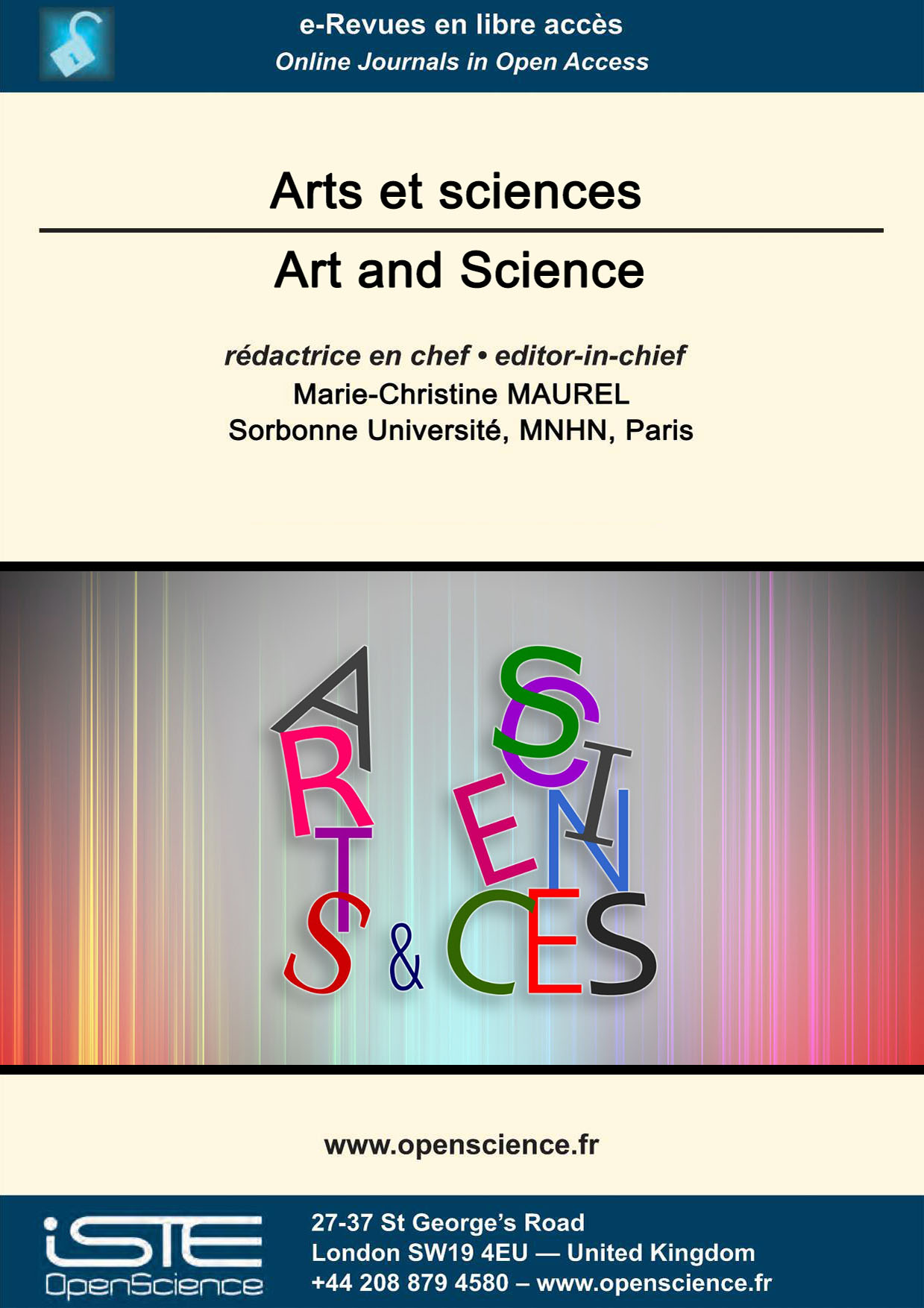

Social Sciences and Humanities > Home > Art and Science > Issue
An art/science collaboration has enabled a contemporary artist to re-discover an age-old technique used by glaze-masters such as Leonardo da Vinci. The process uses dark bitumen, white mineral particles, a brush, and knowledge of drying and laying time to produce intense, structural, blue hues that are mainly due to Rayleigh light scattering. Although these blue hues are mentioned in ancient studio manuscripts, very few are found in actual easel painting masterpieces.
Early in his long career, Ernst Haeckel (1834 - 1919) twice visited Villefranche-sur-Mer. First, as a student, in 1856 during a sampling trip to Nice, and again in 1864 when sent to Nice by his parents for a change of scenery following the untimely death of his first wife. The two visits appear to have been key events in the development of Haeckel’s science and art as they are the beginnings of his studies, first on radiolarians, and then on medusa. During the 1856 visit he observed for the first time living radiolarians, the group of microscopic planktonic protists, the subject of his first monographic work in 1862 that brought him fame at a young age. During the 1864 visit he resided in Villefranche-sur-Mer. There, for the first time, he made detailed observations on the development and morphology of medusa. He subsequently produced monumental monographs on both radiolaria and medusa, e.g., the Challenger Reports, which remain today his major scientific contributions. Haeckel’s artistic fame is largely from his Kunstformen der Natur. The book relies heavily on illustrations of both radiolarians and medusa, more so than other groups of organisms, and contains iconic images of medusa and radiolarians, suggesting a major importance in Haeckel’s art for the two groups linked closely with Haeckel’s visits to Villefranche-sur-Mer.
Jean-Luc Marion proposes the third phenomenological reduction, beyond Husserl and Heidegger. The radical reduction, the donation of transcendence in immanence, dissolves appearances and false realities; in this way, the donation establishes the stages of phenomenality. It establishes the fourth principle of phenomenology: the more reduction, the more donation. We analyze the notion of the irruption of the event as novelty; such events are quantum phenomena. That which bursts in and amplifies is the notion of donation, which was limited to the sensitive; in this way, events (quantum phenomena) become accessible through ’counter-experience’. Quantum phenomena are ignored as to what they really are and on which traditional procedures are applied in order to limit them to a phenomenicity that is not their own. There is a deficiency and absence of concept, thus, the visibility of the appearance arises against the current of the intention overflowing the donation. This saturated phenomenon surprises by the originality of the event exceeding the gaze and suffocating the concept; by way of vindication. Vindication calls us and challenges us, summons us. The person summoned discovers himself as a subject who experiences the surprise of an event that he does not understand. The arrival of the manifestation of oneself from oneself provokes a reconfiguration of the world-subject and a crisis; it is novelty, it is transgression, hence the event (quantum phenomenon) is a saturated phenomenon because it bursts in, transforms and innovates us.
In 2017 artist Noémie Sauve went aboard Schooner Tara Pacific to join a seven weeks expedition studying the state of coral reefs. In this article the artist overviews this experience and the way in which it altered her means of perceiving the relation between art and science: shaping art that supports complexity of the living in order to pay respect to what escapes us even with science.

2025
Volume 25- 9
Issue 12024
Volume 24- 8
Special issue2023
Volume 23- 7
Issue 12022
Volume 22- 6
Issue 12021
Volume 21- 5
Special issue2020
Volume 20- 4
Special issue2019
Volume 19- 3
Issue 12018
Volume 18- 2
Issue 12017
Volume 17- 1
Issue 1